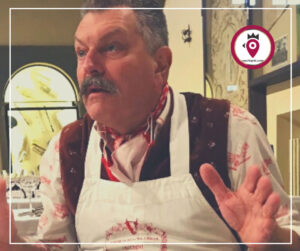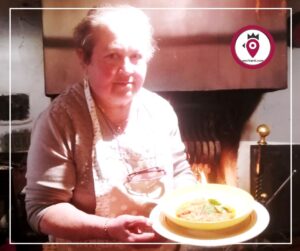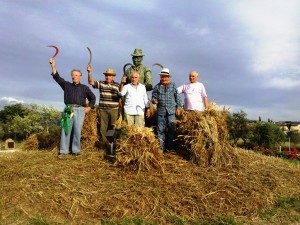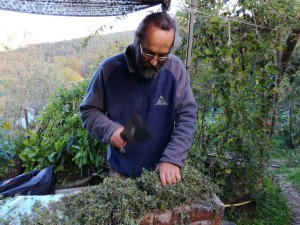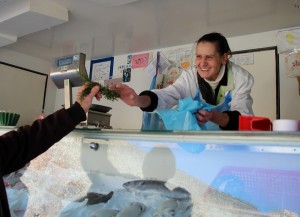Articolo disponibile anche in: Italian
Before the 1950’s, the most used fuels for cooking and warming the home were wood and charcoal.
Each Chianti house or appartment which didn’t have gas had a hearth and burners at the ends of the hearth. Here wood and charcoal were placed, producing enough heat to warm a small container, usually made up of terracotta.
For important occasions, the base of the hearth was used. To lift up pots and pans, there were 3-footed tripods of wrought iron, where the embers, produced by the burning wood, were placed.
A “calderotto” (cauldron) was hung by a chain over the hearth to obtain hot water. For important family gatherings, one might have a spit . A drip pan collected the drippings from the rotisserie where pork, liver and small game was cooked on the spit. “Patate alla leccarda” were made with the drippings.
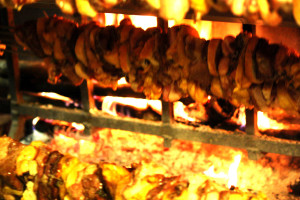
In houses which didn’t have their own wood, Guido “il carbonaio” (the coal man), furnished baskets full of wood and carbon briquets. Plastic hadn’t been yet invented so containers were made of interwoven material of vegetable origin: baskets were made up of strips of wood salvaged from small trunks of chestnut trees.
The coal and charcoal were created when the woods were cut, from piles of wood placed in a sort of pyramid and covered with clods of dirt to prevent too much oxygenation and burning.
The wood had to char on its own because of he heat, but not burn.
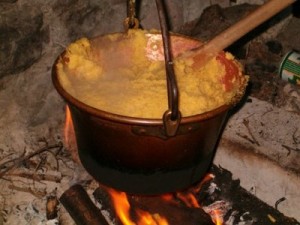 If the wood wasn’t completely carbonized, when the fire was lit it caused smoke and flames.
If the wood wasn’t completely carbonized, when the fire was lit it caused smoke and flames.
To carry this material, a wheelbarrow and a horse shared the labors. Much of this activity changed after the 50’s.
Coal was partially substituded by gas in canisters and wood burning fireplaces. But the wood still needed to be stacked in pieces small enough to enter the small hearth. Slowly but surely, coal lost its primary function.
The horse was substituted by a machine. And so ended the “romantic age”…as we entered “consumer civilization”.
Roberto Borghi
